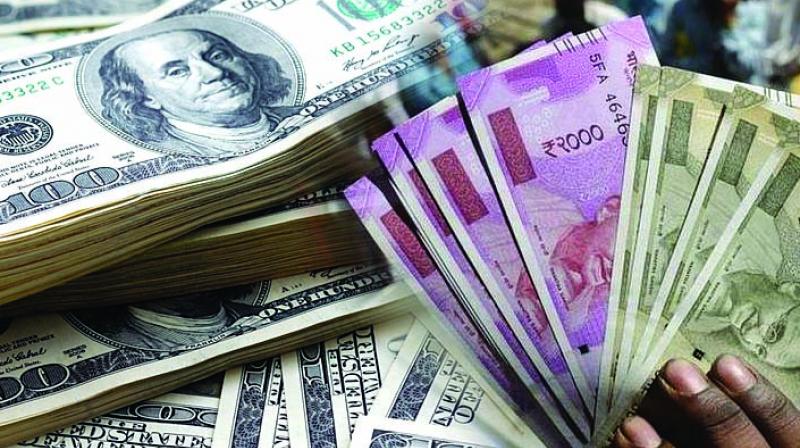Most Asian units slip as trade tensions weigh; Indian rupee falls most
The dollar jumped 0.4 per cent to 99.273 against a basket of six major currencies, stepping up pressure on Asian units.

Most emerging Asian currencies weakened against a sturdy dollar on Tuesday as investors fretted over the outcome of Sino-US trade talks, while weak economic data sent the Indian rupee tumbling.
Late on Monday, Bloomberg News reported that Chinese and US officials are struggling to agree on a schedule for a round of trade negotiations that were expected this month.
“Such headlines lay bare the tremendous gulf between the US and China in reconciling their differences over trade, leaving the global economy hanging in the balance,” Han Tan, Market Analyst at Cyprus-based brokerage FXTM said.
The news sent the Chinese onshore yuan to 7.1825 against the dollar in early trade, its weakest since February, 2008.
However, People’s Bank of China set its official mid-point fix at 7.0884 against the dollar, weaker than its previous fix but at a level stronger than traders expected, limiting the yuan’s fall.
Meanwhile, the dollar jumped 0.4 per cent to 99.273 against a basket of six major currencies by 0532 GMT, stepping up pressure on Asian units.
The Indian rupee and the Malaysian ringgit were the worst performers in the region, playing catch up with peers as both markets re-opened for trade after a holiday on Monday.
The rupee plunged 1.2 per cent in tandem with its stock markets as investors priced in data released late on Friday which showed that its economy grew at its weakest pace since 2013 between April and June.
A private sector survey also pointed to weakness in its manufacturing sector in August, as demand and output grew at their weakest pace in a year and cost pressures increased.
Economists said the chances of the Reserve Bank of India cutting interest rates were increasing.
“We now expect another 15-25 bp rate cut in December,” Radhika Rao, economist at DBS Group Research wrote in a note on Monday.
“USDINR continues to watch CNY movements and broader dollar bias, which at this juncture points towards further INR weakness owing to a weak global environment,” Rao added.
Logging a fall of about 3.4 per cent, the rupee is the region’s worst performer this year after the Korean won and the yuan.

